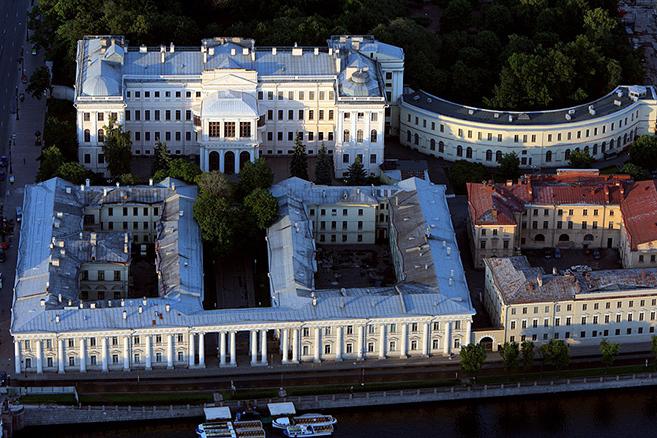In the year one thousand seven hundred and forty-one, Empress Elizabeth, who had just ascended to the throne, issued a decree on the construction of the Anichkov Palace. Petersburg was expanding rapidly. The new architect of the northern capital Mikhail Zemtsov created the project of a multi-storey building in the form of an elongated letter “H”, and the famous architect B. Rastrelli completed the grandiose construction in the Baroque style .

In those days, Fontanka was the outskirts of the city, and on the site of the modern Nevsky Prospect there was a clearing. According to the author of the project, Anichkov Palace was supposed to be a decoration of the entrance to the city. To him from the Fontanka itself a canal was dug, which ended with a small harbor. The palace, a little reminiscent of Peterhof, Elizabeth donated to her favorite Razumovsky. Later, the building was repeatedly donated, mainly the palace was a wedding gift. After Catherine the Second came to power, she bought Anichkov’s palace from Razumovsky’s relatives and gave it to Grigory Potemkin. In addition, the favorite was presented with one hundred thousand rubles for the reconstruction of the palace to his own taste. As a result, over two years, the architect I.E. Starov rebuilt the building in the style of classicism. The multi-storey characteristic of the Baroque disappeared, the magnificent stucco molding was destroyed, the harbor was filled up. As a result, Anichkov Palace became more austere and colder.
At the end of the eighteenth century, the building was bought into the treasury, and the Cabinet of the Emperor was located in it for a short time. Later, a separate room was built for him by the architect Quarenghi. Anichkov Palace Alexander the First gave the wedding to his own sister, the Grand Duchess, dearly beloved Catherine Pavlovna, who became the wife of Prince George of Ordenburg.
In 1817, the future Emperor Nicholas I settled in the palace . During his reign, the architect Rossi changed the interiors of some of the halls of the palace. When Nicholas moved to the Winter Palace, he came to Anichkov Palace during Lent; luxurious court balls were regularly held here.
There are monuments without which it is difficult to imagine Petersburg. Anichkov Palace has always been an adornment of the northern capital. It is closely connected with the life of the great people of Russia.
In 1837, after a severe fire in the Winter, the august family of Nicholas I for some time lived in the famous palace. The son of the emperor Alexander was brought up here, one of the teachers of which was the greatest Russian poet Vasily Zhukovsky. He was provided with separate apartments in the palace.
After the revolution, one thousand nine hundred and seventeen, Anichkov Palace in St. Petersburg for a short time was a museum of the history of the city. In 1937, the opening of the Palace of Pioneers took place here. But the outbreak of World War II made its own adjustments to the history of the legendary palace. On October 1, 1941, a surgical hospital was opened in this historic building, during which thousands of lives of the heroic defenders of the besieged Leningrad were saved during its existence. In the spring of 1942 the hospital was relocated, and in May the Palace of Pioneers reopened here.